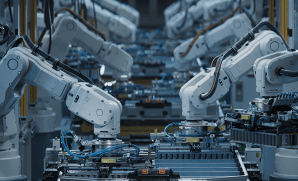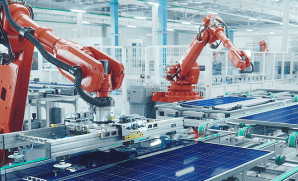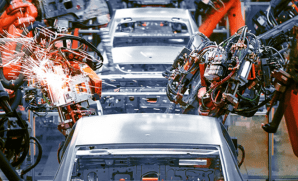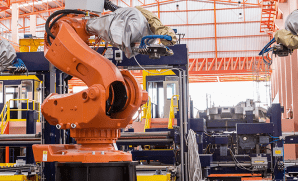The Automation Revolution: Transforming Wisconsin’s Manufacturing Landscape
Publish Date: May 3, 2024Wisconsin manufacturers recognize the significant benefits of investing in automation to foster growth, from streamlining operations, reducing repetitive tasks, addressing labor shortages, and enhancing overall production capacity. Experts at the recent Wisconsin Economic Summit highlighted how automation presents a valuable opportunity for businesses in the region to improve competitiveness and boost workplace productivity.
While the advantages of automation are clear, it’s essential to consider the potential challenges. Prioritizing technology adoption may sometimes disadvantage smaller companies and necessitate changes in the skill sets required by manufacturers. Before exploring the topic further, it is crucial to examine the rise of automation in Wisconsin’s manufacturing sector and the factors responsible for this growth.
The Rise of Automation
Automation, characterized by integrating robotics, artificial intelligence, and advanced machinery, has transformed manufacturing. Wisconsin’s diverse sectors, including automotive, aerospace, electronics, and food processing, have witnessed this transformation firsthand. Automation has facilitated improved operational efficiency, enhanced precision, and increased scalability for companies operating in these industries. Consequently, businesses have streamlined their production operations and maintained their competitive edge within the global market.
- One of the key drivers behind the rise of automation in Wisconsin’s manufacturing sector is the need to adapt to changing market dynamics. With increasing pressure to deliver products faster, cheaper, and with higher quality, manufacturers are turning to automation to achieve these objectives.
- Automation has enabled Wisconsin manufacturers to overcome longstanding challenges such as labor shortages and rising wage costs. By automating routine tasks, companies can reduce their reliance on manual labor, mitigate the impact of workforce fluctuations, and maintain consistent productivity levels. This has proven especially beneficial in sectors facing difficulty attracting and retaining skilled workers.
- Automation has opened up new possibilities for innovation and product development in Wisconsin’s manufacturing sector. By harnessing the power of automation technologies, companies can explore new design concepts, optimize manufacturing processes, and bring innovative products to market faster than ever before. This agility and adaptability are crucial for staying ahead in an increasingly competitive global marketplace.
Impact on the Manufacturing Sector
In Wisconsin, automation has had a profound impact on the manufacturing sector.
- Once plentiful, traditional manufacturing jobs have been gradually replaced by automated systems and advanced machinery. This shift has led to a transformation in the skills required by the workforce, with a greater emphasis on technical expertise, problem-solving abilities, and digital literacy.
- Despite the initial apprehension, automation has been a welcome change for Wisconsin’s manufacturing sector. It has sparked a new era of innovation and competitiveness. Companies that have embraced automation have found themselves better equipped to meet the demands of a rapidly changing market, enabling them to stay ahead of the curve and remain globally competitive.
- Automation has created new opportunities for skilled workers in Wisconsin. Jobs in robotics programming, system maintenance, and data analysis have emerged, offering lucrative career paths for those with the right skills and training. Programs and initiatives to upskill the workforce have gained traction, ensuring workers are equipped with the tools they need to thrive in an automated environment.
- Automation has enabled Wisconsin manufacturers to re-shore production and return jobs to the state. By leveraging automation technologies to increase productivity and reduce costs, companies have found it more feasible to produce goods domestically, contributing to the revitalization of local economies and communities.
However, the transition to automation has not been without its challenges. Displaced workers, particularly those with limited technical skills or education, face difficulties adapting to the changing job market. Addressing this issue requires a concerted effort from policymakers, businesses, and educational institutions to provide retraining programs, apprenticeships, and other support mechanisms to help workers transition into new roles.
Enhancing Manufacturing Productivity through Automation: YASH Technologies’ Support for Wisconsin Industries
YASH Technologies is a leading provider of automation solutions for manufacturing organizations in Wisconsin. Our solutions help companies balance revenue growth and cost efficiency by streamlining their operations, enhancing productivity, and driving operational excellence. By leveraging our automation capabilities, businesses can optimize resources, improve efficiency, and ensure sustainability in a competitive market landscape. YASH is committed to delivering cutting-edge automation solutions that enable manufacturing firms in Wisconsin to adapt to evolving industry trends, boost profitability, and maintain a leading position in the market.















